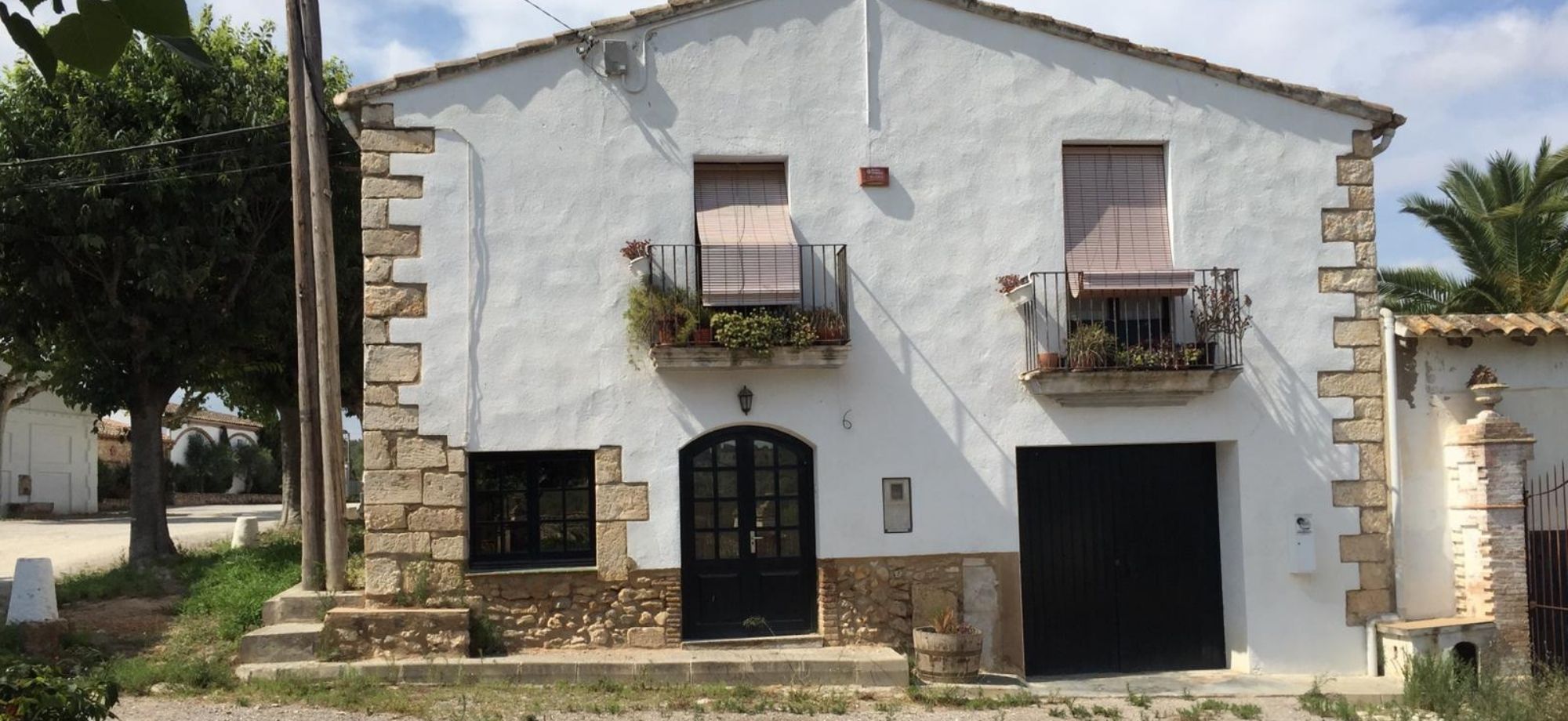
Artist
45/ In The Studio With Joshua Perkin
We are so thrilled to launch this ‘In The Studio With’ feature where we get to know Joshua Perkin. His debut collection 'Pruning The Conversation Tree' is a series of ten works on canvas and five works on paper produced during the summer of 2021 in Viladellops, a vineyard in Cataluña.
Here we delve into his background, inspiration, and the relationship between labour and artistic production that still informs his work today.
 |
How did you become an artist, what's your training and background?
I started painting at a very young age, influenced and encouraged by my mother's creativity and sensibility, and my father's productivity and determination. I grew up on a farm in the UK, and my first memories of painting are outside in the fields, making watercolour landscapes with my mother. I obtained a fine art scholarship for high school and maintained an interest in painting throughout my education. Upon completing high school I made a decision to begin an undergrad degree at Brighton (UK) in Literature, as opposed to painting, however, I continued to paint constantly during my time in Brighton. After completing the course in Brighton in 2013, I relocated to Spain.

|
There Is Immeasurably More Than Comes Out In Words by Joshua Perkin
|
After working various jobs, I slowly became more and more involved in the construction industry, specifically building Skateparks. I spent a number of years both working professionally as a skatepark builder in Spain and volunteering for a number of Skatepark construction charities that provide concrete skateparks for communities without the economic infrastructure to provide facilities for their skateboarding communities. These volunteering jobs took me through Africa, Palestine, Iraq, and Nepal to name a few, and this lifestyle went hand in hand with painting: I would work on a project, either in Europe or abroad, which would typically last anywhere from three weeks to two months, and then spend roughly the same amount of time dedicating myself solely to painting. This process led me to draw a number of comparisons between my artistic practice and this form of labour work in concrete.
To investigate this further I began a masters in ‘Artistic investigation and production’ at the University of Barcelona in 2018, and during my time there I produced ‘La Obra y La Obra’, a thesis and body of work that investigates the relationship between Labour and artistic production. Since the completion of the masters in 2020, I have been dedicating myself full-time to painting, exploring a multitude of subject matters within the work, only taking breaks to work on the family farm in the U.K.
 |
 |
| Stored Away In The Mind & A Hundred Rabbits Can't Make A Horse by Joshua Perkin |
PE Paper Portraits by Joshua Perkin
|
What are your influences? Are there certain artists, subjects, or movements that inspire your work in particular?
My main influences are generally my surroundings and experiences. Although the majority of my painted images are abstracted from reality, my immediate surroundings usually seem to creep into the work, buildings, animals, music, films, books, or the positions in which people are sitting, whether it is in the colour palette, visual narratives or reference to form. This has been emphasised in this body of work, ‘Pruning the conversation tree’; I wanted to consciously tie the images together, and the easiest way I found to do that was making the place in which I made them, Viladellops, a protagonist within itself. I used architectural features within the village, as visuals references, adopting these features into my usual painted narratives.
 |
 |
| Man Grows Used To Everything by Joshua Perkin |
Viladellops, Cataluña
|
I usually try to block out what other people are currently making and painting, mainly because there are so many people whose work I love, and there are such tidal waves of work and information readily available, that it’s easy to question yourself and compare yourself to others, this can definitely be detrimental to your outlook and your work. Having said that, it's only right to name a few painters and makers whose work I admire, both up and coming and internationally recognized, who are well worth investigating: Alexander Middleton, Ed Burks, Oliver Pearce, Will Thomson, Paula Rego, Henry Taylor, Gema Prades, Lucia Ferrari, Maria Marvila to name a few...

|
Sunset by Alexander Middleton
|
What does your process look like?
My process is more a culmination of personal trial and error as opposed to techniques learned from other individuals. I enjoy the process of stretching canvases, and often I make the frames also. When it comes to paint I usually mix household paints with acrylics, and occasionally use oils. I always have a few paintings going at the same time, and for the last three years have lived in a studio, so it's been hard to get away from the work. The space is all open plan so I end up painting where I eat and sleeping where I paint. I also go back to help out my father on the farm at least once a year for a few months when there is a lot to do, and I always end up painting there as well, usually in a dusty barn. Whilst working on construction I rarely paint.

|
Pruning The Conversation Tree, works in progress in the temporary studio, set up for the summer in Viladellops.
|
What emotions or responses do you hope to create for the viewer with your work?
I have struggled in the past with feeling like my paintings lack integrity beyond the basic aesthetic, and as a response have often tried to explore various socio-political issues within the work. This culminated in my investigation into the relationship between labour and artistic production previously stated, and I delved into many themes that stem from this core subject in my work for a few years. The geographical origins of my painted individuals is an obvious example: the people within the images are essentially void of any geographical origin because they are generally painted without visual reference, therefore the random and various tones of the skin color of each individual cannot be specifically categorized, putting them all into the same category. This lack of obvious geographical origin is done with the intention of creating a visual ambiguity that invites the viewer to question. This can be applied to various aspects of the images; narrative ambiguities which intend to invite questions and speculation.
At the same time, I am also just quite dedicated to the process of painting and lately have felt more comfortable just painting freely, without an intention to consciously address a certain subject matter or communicate anything specifically to the viewer. I hope the ambiguity of the images and subject matter still raises questions, but the more I paint the more I prefer to leave the understanding of the images, and conversations about them to the viewer. The title of the series, ‘Pruning The Conversation Tree’, makes reference to this as well as other things.

|
PE paper portraits by Joshua Perkin
|
@joshuaperkin
